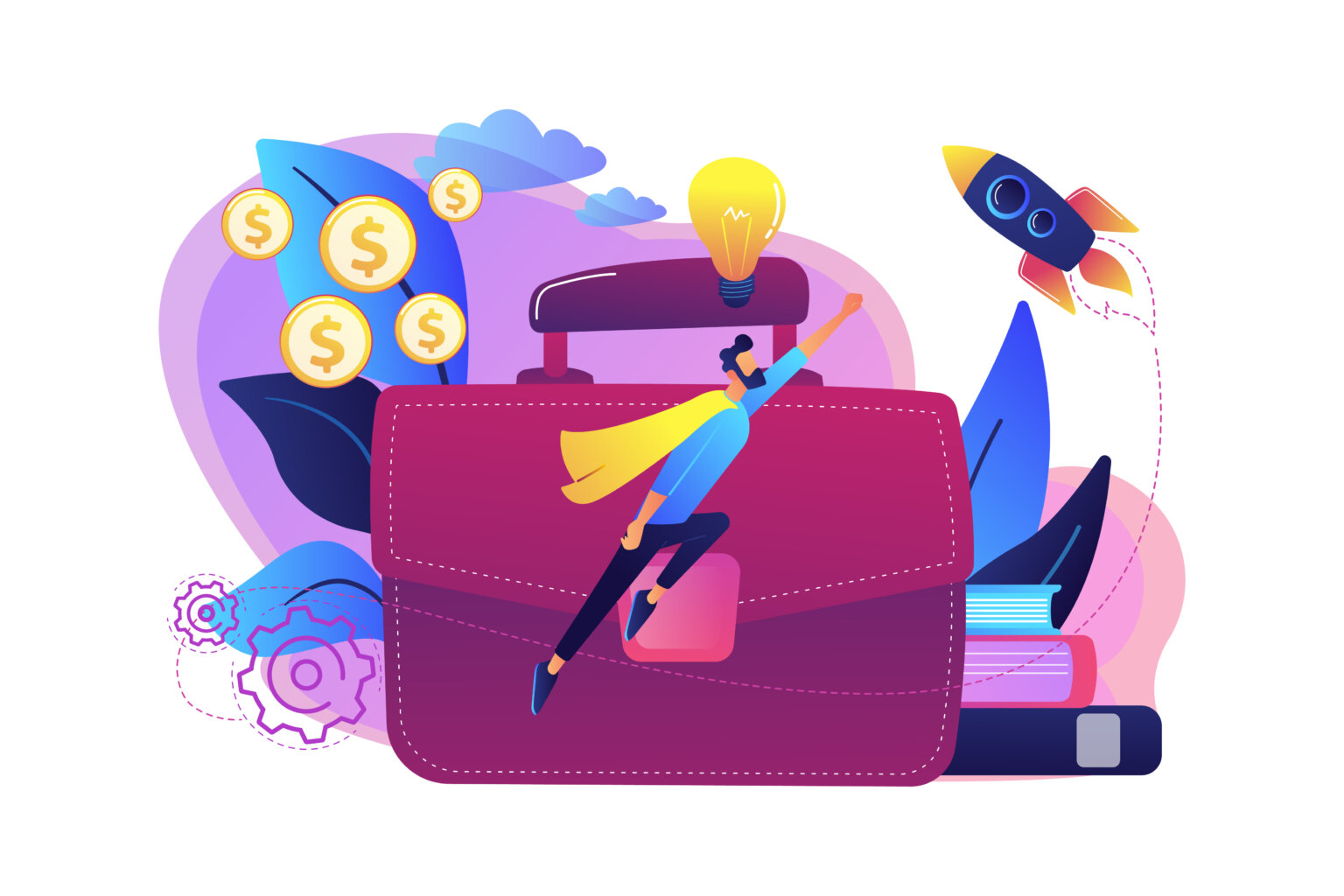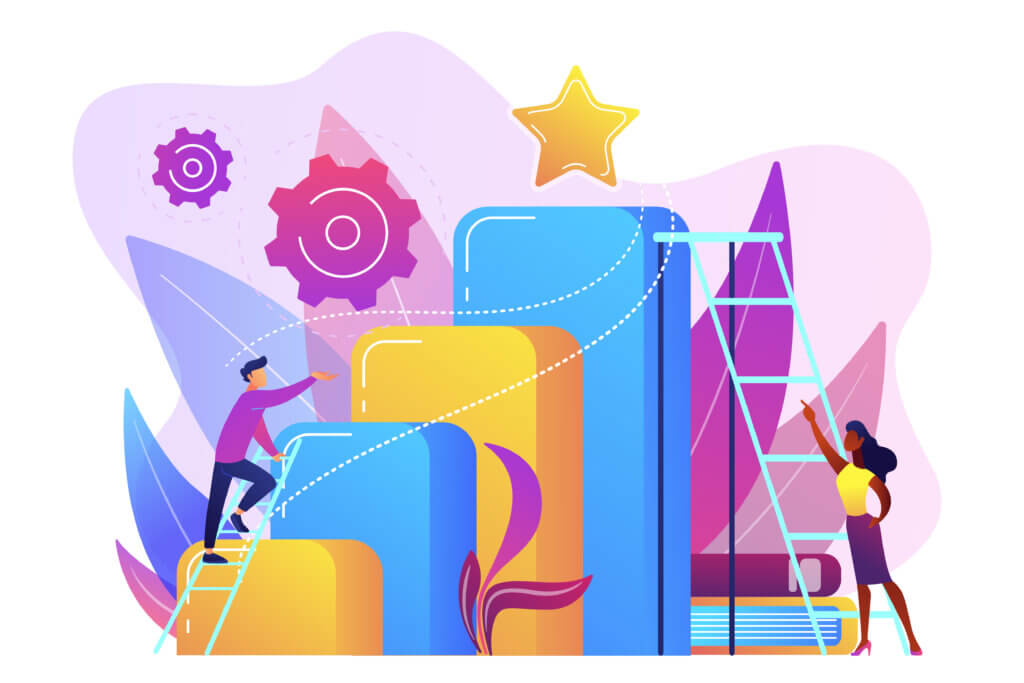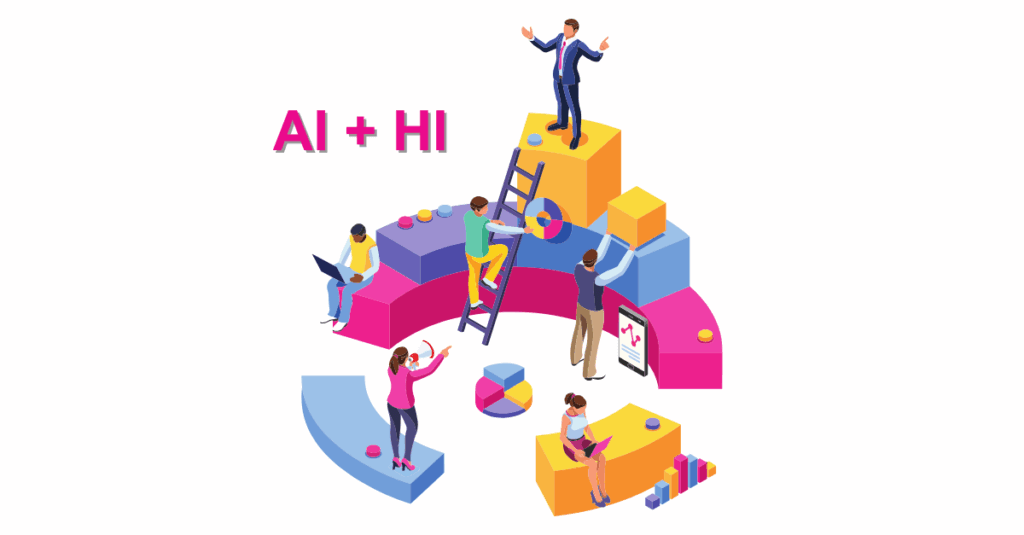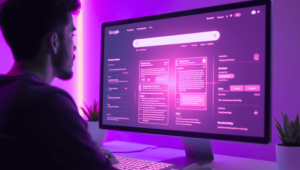How do you scale reach without sacrificing connection? How do you deliver more, better content, personalized experiences, deeper insights—without burning out your human team?
At Futuri, we believe the answer is not “AI instead of humans” but “AI with humans.” As our CEO Daniel Anstandig has laid out in multiple articles, interviews, and product launches, the future belongs to organizations that build skillful, ethical, creative human + AI workforces, teams where AI handles scale, repetition, data, and humans focus on purpose, strategy, creativity, relationships.
Below you’ll find a framework for B2B sales leaders to build that kind of workforce, plus examples of how Futuri is doing this in broadcast media and digital publishing.
Why a Human + AI Team Is Now Essential
Some of the key themes from Daniel Anstandig:
- AI as companion, not replacement
In “AI in Broadcasting: A Companion, Not a Competitor,” Daniel argues that companies that adopt AI to augment human capabilities will outcompete those who try to replace people. For example, Futuri’s AudioAI and RadioGPT are used to fill coverage gaps (night, weekend, unmanned dayparts), not to push people out. - Creativity + Locality + Speed
AI agents handle research, trend intelligence, and instant spec creative while automating admin, so humans focus on strategy, relationships, and closing. The result is more appointments, faster cycles, bigger deals, and higher renewals, with consistent quality across markets. - Trust and Transparency
Audiences want to know if AI was involved. Futuri’s AI in Media Study shows that audiences are open to media’s adoption of AI for content creation. Andtandig states that, in radio and audio, “1 in 5 listeners believe they already listen to a radio station that is using AI. Listeners also believe that AI will assist media companies in creating more relevant and engaging content. They just want to be informed of its use, and for it to be used in the right scenarios.” This highlights the need for balance between human creativity and AI efficiency. - New job shapes, not just job cuts
AI is creating new kinds of work (AI voice/content oversight, scripting AI personalities, voice cloning oversight, data, and analytics roles), while automating or offloading repetitive production tasks.
What a Human + AI Workforce Looks Like in Practice
In a sales organization, AI agents aren’t abstract—they become teammates. Here’s how roles play out when humans and AI collaborate effectively, with examples from Futuri products:
| Role / Function | What AI Can Do (at Scale) | What Humans Do Best | Key Collaboration Points |
| Sales Assistant / Researcher (TopLine) | Automate category research, build client personality profiles, and generate ready-to-use decks with market + audience data. | Build relationships, tailor strategy to local context, prioritize the right opportunities. | AI delivers the prep instantly; humans use insights to have smarter, more confident client conversations. |
| Creative Producer (SpotOn) | Instantly generate spec audio and video spots with licensed music, cloned or AI voices, and visuals. | Guide creative direction, ensure messaging aligns with brand tone, and present ideas persuasively. | AI provides a tangible proof of concept in minutes; humans refine and pitch to win client buy-in. |
| Sales Strategist / Planner (TopicPulse) | Surface real-time trending topics and predictive insights about what audiences care about. | Connect insights to advertiser objectives, craft compelling marketing solutions. | AI supplies data-driven “valid business reasons” for outreach; humans shape them into strategic campaigns. |
| On-Air Sales Partner (AudioAI) | Generate localized, sponsorship-ready voice content—weather, news, lifestyle updates—24/7. | Build and sell integrated campaigns, package sponsorships, and maintain advertiser relationships. | AI creates scalable inventory; humans sell it and ensure alignment with client goals. |
| Sales Operations / Efficiency | Automate scheduling, approvals, CRM data entry, and generate compliance-ready reports. | Ensure accuracy, enforce standards, and manage client expectations. | AI handles repetitive workflows; humans oversee quality and maintain accountability. |
AI handles the prep, production, and scale. Humans deliver judgment, relationships, and strategy. Together, they drive faster closes, stronger renewals, and bigger deals.
Steps for Sales Leaders: Building Your AI‑Augmented Team
Here is a practical roadmap for making this work in a B2B sales organization.
- Assess where the pain is highest and where scale matters most.
What are the repetitive tasks eating up your team’s time? What content/messages are delayed because your human resources are stretched? Where is lag hurting conversion or customer engagement? - Pilot small, tangible projects.
Choose one or two workflows where AI can deliver clear value (e.g. automatically generating spec proposals, personalized follow-up emails, dynamically tailored content for verticals). You don’t have to try to do everything at once. - Define roles & responsibilities clearly.
- Who owns the AI output?
- Who reviews or edits it?
- What level of human oversight is required (tone, accuracy, brand alignment)?
- Who maintains/trains the models or selects the datasets?
- Invest in skill-building and culture.
Your human team needs to learn how to work with AI tools: prompt engineering, knowing strengths and limitations, and knowing when to intervene. Leaders need to foster a culture that sees AI as an enabler, not a threat. - Uphold ethics, transparency, and trust.
- Disclose when AI is being used (in customer‑facing content).
- Ensure quality checks: biases, factual errors, brand misrepresentation.
- Build guardrails: voice cloning, content attribution, data usage.
- Measure impact and iterate.
Track both quantitative and qualitative metrics: speed, cost saved, output volume, customer engagement, and brand perception. Continuously refine the AI workflows based on human feedback. - Scale once the foundation is stable.
As trust builds, expand AI use: more content types, more verticals, more dynamic personalization. But always retain human roles for oversight, creativity, relationships.
Futuri’s AI + HI (Human Intelligence): Examples
To show that this is not theoretical, here are some of Futuri’s practices and innovations that illustrate an effective human + AI workforce:
- AudioAI (Formerly know as RadioGPT):
In just 18 months, Futuri’s AudioAI has generated over 1 million voice tracks. These include voice content in response to real‑time local trends (weather, news, social‑media trending) that previously would have required human hosts or producers to work through long queues. These are being used to augment local branding, fill unmanned dayparts, support engagement, not replace the human voice completely. - SpotOn:
An AI‑enabled service to generate spec spots (scripts, voiceovers, music, videos, production) quickly for advertisers. This saves thousands of human hours in production. It frees creative and sales teams to focus more on strategy, story, and client relationships. - AI in Media Study (NAB Show 2024):
Futuri surveyed thousands of media consumers to understand how audiences feel about AI‑created content. Key findings: high awareness of AI, openness to AI being involved in content creation (provided there is disclosure), and desire for personalization and relevance. Sales leaders can draw lessons here: no point pushing AI invisibly; instead, use transparency and audience feedback as strengths. - Leadership and culture at Futuri:
Over 150 people at Futuri are working with AI/ML daily to build content, analyze data, optimize revenue, etc. Foundational to this has been continual learning, experimentation, and testing, with oversight, which improves outcomes.
Risks, Pitfalls, and How to Avoid Them
Building a human + AI workforce isn’t risk‑free. To avoid common missteps:
- Don’t treat AI like a magic box. If you give it bad data, no oversight, or unrealistic expectations, it underperforms and can damage the brand.
- Don’t overlook the human side: buy‑in, culture, and training matter more than the tech alone. Teams afraid of AI will resist or misuse it.
- Beware ethical issues: voice cloning, bias, and misinformation. Disclose usage, maintain oversight.
- Avoid “stunt” use: using AI just for attention without real value tends to backfire, as Daniel has observed.
- Don’t try to replace all humans. AI excels in repetition, scale, and speed. Humans excel in strategy, nuance, creativity, and relationships. Misbalancing will erode authenticity.
What This Means for B2B Sales Leaders Right Now
Sales organizations especially can adopt this model to:
- Tailor messaging for different verticals, personas, and geographies automatically.
- Generate more spec creative and collateral to feed faster, more iterative sales cycles.
- Automate lower‑value tasks (data entry, basic follow‑ups, tracking) so sales reps can spend more time with clients.
- Use predictive analytics to identify leads/opportunities, content topics, and sequences that are resonating.
- Ensure compliance, consistency, tone, and brand integrity via oversight workflows.
Key Takeaways
- The future workforce is human + AI, not human vs. AI.
- AI handles scale, repetitive work, speed; humans bring strategy, empathy, relationships, trust.
- Ethical, transparent implementation and continuous feedback are essential.
- Start small, show wins, build culture, expand.
- Organizations that do this well will gain speed, reach, relevance—and a competitive advantage.
Call to Action
Your next hire doesn’t need a desk. They need a login.
With Futuri’s AI agents like TopLine, SpotOn, TopicPulse, AudioAI, and more, you can expand your sales force without adding headcount, closing more deals faster, with higher confidence.
Ready to put AI to work for your team? Let’s talk about adding your first AI agent.






